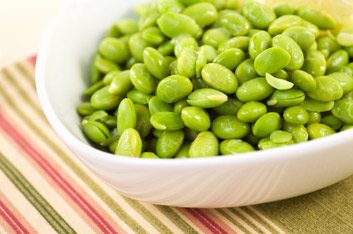
Shake things up
If you regularly load your shopping cart with nutritious staples such as kidney beans, yogurt and spinach, it’s probably safe to assume you eat a healthy diet. But, as a registered dietitian, even I find relying solely on these foods day in, day out can become stale. To shake things up and get even more health benefits, try these 10 delicious substitutions for some of your favourite healthy foods.
Old fave: peanut butter. New rave: almond butter
Why it’s so great
This sweeter-tasting alternative has more calcium, magnesium and phosphorus-three minerals that work to strengthen bones-than peanut butter. Plus, a California study found that including 3? 1/2 ounces (100 grams) of almond butter in a plant-based diet over four weeks reduced harmful LDL cholesterol, while slightly raising heart-protective HDL cholesterol levels in both men and women. “Even though almonds are high in fat, it’s mostly monounsaturated fat, which helps to drive down unhealthy cholesterol levels,” says registered dietitian Wendy Bazilian, co-author of The SuperFoodsRx Diet. Almonds also have more of the antioxidant vitamin E than peanuts and are spared the hydrogenated oil and sugars that are added to most processed peanut butters.
Prep tip
Mix equal amounts of almond butter, soy sauce, lemon juice and honey, and drizzle on top of your greens.
Where to find it
Health food stores and in the health food section of most large supermarket chains.
Try:
• Chocolate Almond Smoothie
• Carrot Salad with Almond Dressing
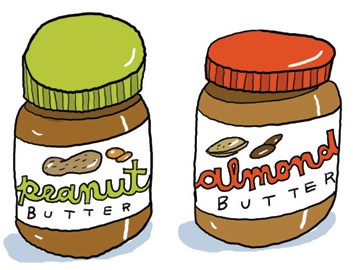
Old fave: peanut butter. New rave: almond butter
Why it’s so great
This sweeter-tasting alternative has more calcium, magnesium and phosphorus-three minerals that work to strengthen bones-than peanut butter. Plus, a California study found that including 3? 1/2 ounces (100 grams) of almond butter in a plant-based diet over four weeks reduced harmful LDL cholesterol, while slightly raising heart-protective HDL cholesterol levels in both men and women. “Even though almonds are high in fat, it’s mostly monounsaturated fat, which helps to drive down unhealthy cholesterol levels,” says registered dietitian Wendy Bazilian, co-author of The SuperFoodsRx Diet. Almonds also have more of the antioxidant vitamin E than peanuts and are spared the hydrogenated oil and sugars that are added to most processed peanut butters.
Prep tip
Mix equal amounts of almond butter, soy sauce, lemon juice and honey, and drizzle on top of your greens.
Where to find it
Health food stores and in the health food section of most large supermarket chains.
Try:
• Chocolate Almond Smoothie
• Carrot Salad with Almond Dressing
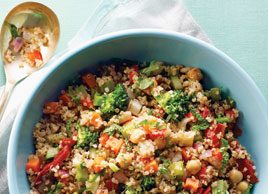
Old fave: brown rice. New rave: quinoa
Why it’s so great
This powerhouse whole grain has more protein than other grains (eight grams per cooked cup/250 mL) and, like brown rice, is bursting with fibre, B vitamins, copper, manganese and magnesium. And because quinoa-which is pronounced “keen-wah” and is hailed as “the mother grain” in its native South America-has no gluten, it’s safe for people with celiac disease. Plus, researchers at North Carolina’s Wake Forest University concluded that people who eat 2?1/2 servings daily of nutrient-dense whole grains are 21 percent less likely to suffer from cardiovascular disease than people who consume less.
Prep tips
To cook quinoa, simmer one part dried quinoa with two parts water or broth for 10 to 15 minutes, or until all the liquid is absorbed. (Quinoa cooks more quickly than brown rice.) Toss cooked quinoa with olive oil, lime juice, chopped roasted vegetables and fresh herbs for a great lunch or side dish.
Where to find it
Bulk and health food stores, and the health food section of larger grocery stores.
Try:
• Quinoa Porridge
• Warm Shiitake Walnut Salad with Quinoa
Old fave: white cauliflower. New rave: orange cauliflower
Why it’s so great
This new hybrid cauliflower has up to 25 times more beta-carotene than its paler counterpart. “Beta-carotene is a provitamin A compound -one that the body can convert into vitamin A, which functions to support bone and nerve growth and development plus the maintenance of healthy eyes and skin,” says Bazilian. “On its own, beta-carotene is a powerful antioxidant, helping to protect the body from damaging free radicals.” Regardless of hue, cauliflower offers a low-calorie way to get fibre, vitamin C, folate and vitamin K-the latter of which is necessary for blood clotting and maintaining strong bones.
Prep tip
Orange cauliflower is “creamier” and more tender than white. Try it steamed with a dash of balsamic vinegar and sea salt. Going to a potluck? Make it a part of your vegetable tray and it’s guaranteed to attract attention.
Where to find it
Farmers’ markets, specialty grocers and some supermarkets.
Old fave: white cauliflower. New rave: orange cauliflower
Why it’s so great
This new hybrid cauliflower has up to 25 times more beta-carotene than its paler counterpart. “Beta-carotene is a provitamin A compound -one that the body can convert into vitamin A, which functions to support bone and nerve growth and development plus the maintenance of healthy eyes and skin,” says Bazilian. “On its own, beta-carotene is a powerful antioxidant, helping to protect the body from damaging free radicals.” Regardless of hue, cauliflower offers a low-calorie way to get fibre, vitamin C, folate and vitamin K-the latter of which is necessary for blood clotting and maintaining strong bones.
Prep tip
Orange cauliflower is “creamier” and more tender than white. Try it steamed with a dash of balsamic vinegar and sea salt. Going to a potluck? Make it a part of your vegetable tray and it’s guaranteed to attract attention.
Where to find it
Farmers’ markets, specialty grocers and some supermarkets.
Old fave: white cauliflower. New rave: orange cauliflower
Why it’s so great
This new hybrid cauliflower has up to 25 times more beta-carotene than its paler counterpart. “Beta-carotene is a provitamin A compound -one that the body can convert into vitamin A, which functions to support bone and nerve growth and development plus the maintenance of healthy eyes and skin,” says Bazilian. “On its own, beta-carotene is a powerful antioxidant, helping to protect the body from damaging free radicals.” Regardless of hue, cauliflower offers a low-calorie way to get fibre, vitamin C, folate and vitamin K-the latter of which is necessary for blood clotting and maintaining strong bones.
Prep tip
Orange cauliflower is “creamier” and more tender than white. Try it steamed with a dash of balsamic vinegar and sea salt. Going to a potluck? Make it a part of your vegetable tray and it’s guaranteed to attract attention.
Where to find it
Farmers’ markets, specialty grocers and some supermarkets.
Old fave: white cauliflower. New rave: orange cauliflower
Why it’s so great
This new hybrid cauliflower has up to 25 times more beta-carotene than its paler counterpart. “Beta-carotene is a provitamin A compound -one that the body can convert into vitamin A, which functions to support bone and nerve growth and development plus the maintenance of healthy eyes and skin,” says Bazilian. “On its own, beta-carotene is a powerful antioxidant, helping to protect the body from damaging free radicals.” Regardless of hue, cauliflower offers a low-calorie way to get fibre, vitamin C, folate and vitamin K-the latter of which is necessary for blood clotting and maintaining strong bones.
Prep tip
Orange cauliflower is “creamier” and more tender than white. Try it steamed with a dash of balsamic vinegar and sea salt. Going to a potluck? Make it a part of your vegetable tray and it’s guaranteed to attract attention.
Where to find it
Farmers’ markets, specialty grocers and some supermarkets.
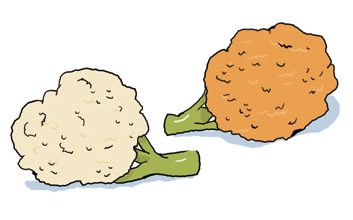
Old fave: white cauliflower. New rave: orange cauliflower
Why it’s so great
This new hybrid cauliflower has up to 25 times more beta-carotene than its paler counterpart. “Beta-carotene is a provitamin A compound -one that the body can convert into vitamin A, which functions to support bone and nerve growth and development plus the maintenance of healthy eyes and skin,” says Bazilian. “On its own, beta-carotene is a powerful antioxidant, helping to protect the body from damaging free radicals.” Regardless of hue, cauliflower offers a low-calorie way to get fibre, vitamin C, folate and vitamin K-the latter of which is necessary for blood clotting and maintaining strong bones.
Prep tip
Orange cauliflower is “creamier” and more tender than white. Try it steamed with a dash of balsamic vinegar and sea salt. Going to a potluck? Make it a part of your vegetable tray and it’s guaranteed to attract attention.
Where to find it
Farmers’ markets, specialty grocers and some supermarkets.

Old fave: green tea. New rave: white tea
Why it’s so great
White tea may actually have more epigallocatechin-3-gallate (EGCG), an antioxidant, than its green brethren because it is the least oxidized tea, and oxidation breaks down EGCG. Studies suggest that frequent intake of EGCG reduces the risk of several ailments including breast cancer, cognitive decline and heart disease. Oregon State University researchers also found white tea (named for its buds, which are picked in early spring while still covered in a white “down”) to be more effective than green in halting cell mutation-the early form of cancer. And for the caffeine weary, it has less of this stimulant than green tea, about 10 to 30 milligrams per cup.
Prep tip
White tea has less astringency and “grassy” undertones than green. It’s best steeped for about three minutes in 170-190°F water (hot with little to no steam).
Where to find it
Tea shops and grocery stores.

Old fave: lean beef. New rave: bison
Why it’s so great
Bison-also known as buffalo-is lower in saturated fat than most cuts of beef (just one gram in 90 grams of lean cuts versus three grams in the same amount of lean loin cuts of beef). On par with beef, bison has heaps of protein, the antioxidant selenium and iron. Penn State University researchers recently found that, among 113 women tested, even mild iron deficiency (which reduces the delivery of oxygen to the brain) hinders completion of mental tasks.
Prep tips
Because of its leanness, bison is easy to overcook, so adding soaked bread crumbs or cooked quinoa to burgers made with ground bison helps hold in moisture. Bison steaks should be cooked to an internal temperature of no more than 160°F; the meat should still be red in the middle.
Where to find it
Some butcher shops, grocery stores or farmers’ markets-many markets have a game-meat vendor selling various cuts of bison.
Try:
• Bison Burgers with Gorgonzola Cheese and Sun-Dried Tomatoes
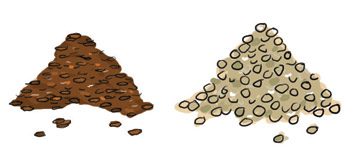
Old fave: flaxseed. New rave: hempseed
Why it’s so great
Hempseeds, like flaxseeds, are a source of omega-3 essential fatty acids-but unlike flaxseeds, they also contain omega-6. Derived from the same plant species as marijuana, but with barely measurable amounts of psychoactive THC, hempseeds may help prevent blood clots. A 2008 Harvard School of Public Health study suggests that consuming foods with the omega-3 fat alpha-linolenic acid reduces heart-attack risk. In addition to good fats, hemp has more protein than other seeds and is an excellent source of magnesium, vitamin E, potassium, zinc and plant sterols, which have cholesterol-lowering abilities.
Prep tips
Add hempseeds to cereal, yogurt, salads and trail mix. Unlike flaxseed, shelled hempseeds don’t need to be ground for proper absorption.
Where to find it
Most health food stores and the health food section of larger grocery stores.
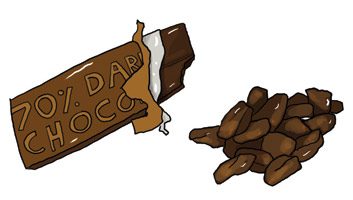
Old fave: dark chocolate bars. New rave: cocoa nibs
Why it’s so great
You get all the health benefits of dark chocolate, but without the added sugar. Cocoa nibs-also referred to as cacao nibs-are roasted cocoa beans that have been smashed into small nuggets. They have lots of fibre (nine grams in one ounce/30 grams), antioxidant flavonoids-which studies show improve memory and reduce blood pressure-and magnesium. Magnesium helps maintain ideal blood pressure as well as muscle and nerve function, build break-resistant bones and enhance immunity. Scientists have found low levels of magnesium were associated with heart arrhythmias and poor blood glucose control in post-menopausal women.
Prep tips
Cocoa nibs are bitter on their own, but try mixing a spoonful into oatmeal, yogurt, cottage cheese or fruit salad for a great-tasting snack. You can also perk up your morning cup of joe by grinding nibs in with coffee beans.
Where to find it
Health food stores, some grocery stores.
Old fave: yogurt. New rave: kefir
Why it’s so great
Kefir can be eaten by those with lactose intolerance since it has strains of probiotic bacteria not found in yogurt that break down much of the naturally present lactose sugar. Kefir is made by fermenting milk with bacteria, and it comes in a variety of consistencies. This dairy alternative, which originated in eastern Europe, contains high-quality protein, vitamin B12 and phosphorus, and one cup (250 mL) has a third of your daily calcium requirement. McGill University researchers found that extracts from kefir may halt the spread of breast cancer cells.
Prep tips
Blend it into a smoothie with milk, frozen berries and a dollop of almond butter. Or mix it into canned salmon or tuna in lieu of mayo.
Where to find it
The dairy section of health food stores and the health food section of some large grocers. A caveat, though: Read the ingredient label, because some kefir products, especially drinks, can contain large amounts of sugar.
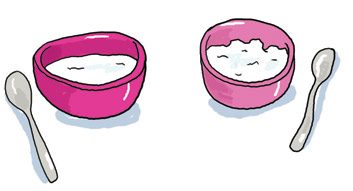
Old fave: yogurt. New rave: kefir
Why it’s so great
Kefir can be eaten by those with lactose intolerance since it has strains of probiotic bacteria not found in yogurt that break down much of the naturally present lactose sugar. Kefir is made by fermenting milk with bacteria, and it comes in a variety of consistencies. This dairy alternative, which originated in eastern Europe, contains high-quality protein, vitamin B12 and phosphorus, and one cup (250 mL) has a third of your daily calcium requirement. McGill University researchers found that extracts from kefir may halt the spread of breast cancer cells.
Prep tips
Blend it into a smoothie with milk, frozen berries and a dollop of almond butter. Or mix it into canned salmon or tuna in lieu of mayo.
Where to find it
The dairy section of health food stores and the health food section of some large grocers. A caveat, though: Read the ingredient label, because some kefir products, especially drinks, can contain large amounts of sugar.
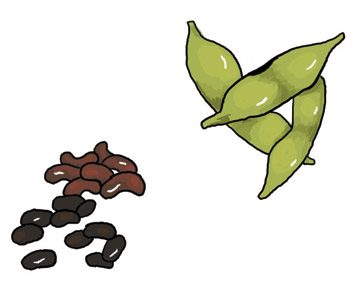
Old fave: kidney or black beans. New rave: edamame
Why it’s so great
Edamame has higher levels of protein, vitamin K, manganese and folate than kidney and black beans. A 2008 study of more than 60,000 women, published in the American Journal of Clinical Nutrition, suggests that upping whole soybean intake can slash the risk of type 2 diabetes. Researchers believe soy protein and isoflavone antioxidants in soybeans may improve insulin sensitivity, providing an anti-diabetic effect.
Prep tips
For a healthy snack, boil shelled edamame for four minutes and then toss with a dash each of sea salt, lemon juice and cayenne pepper. Shelled edamame is also good in bean salads and mixed into quinoa. It is also getting more and more common on restaurant menus; try it as a nutritious appetizer.
Where to find it
The frozen-food section of grocery stores and health food stores. It is available in or out of the pod.
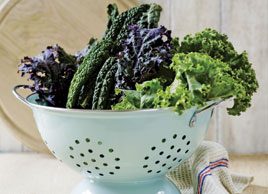
Old fave: spinach. New rave: kale
Why it’s so great
Ounce for ounce, kale has more of the vitamins A, C and K than spinach (though spinach exceeds kale in folate). The leaves also have higher levels of lutein and zeaxanthin than spinach, “two antioxidant carotenoids that play important roles in protecting our eyes from cataracts and age-related macular degeneration,” says dietitian Bazilian. Plus, Harvard scientists have found that for every extra daily serving of vitamin C-rich fruit and vegetables, there was a six percent reduction in risk of heart disease-but for every incremental serving of dark-green leafy vegetables, there was a 23 percent reduction in risk.
Prep tip
Some may find raw kale too bitter to include in salads. Instead, gently sauté it with sesame oil, garlic and a splash of lemon juice or balsamic vinegar for three to four minutes, and serve as a warm side dish.
Where to find it
The produce aisle of most grocers.
Related:
• 8 cruciferous vegetables and how to love them
• How to make fantastic salads
• Is chocolate healthy?
